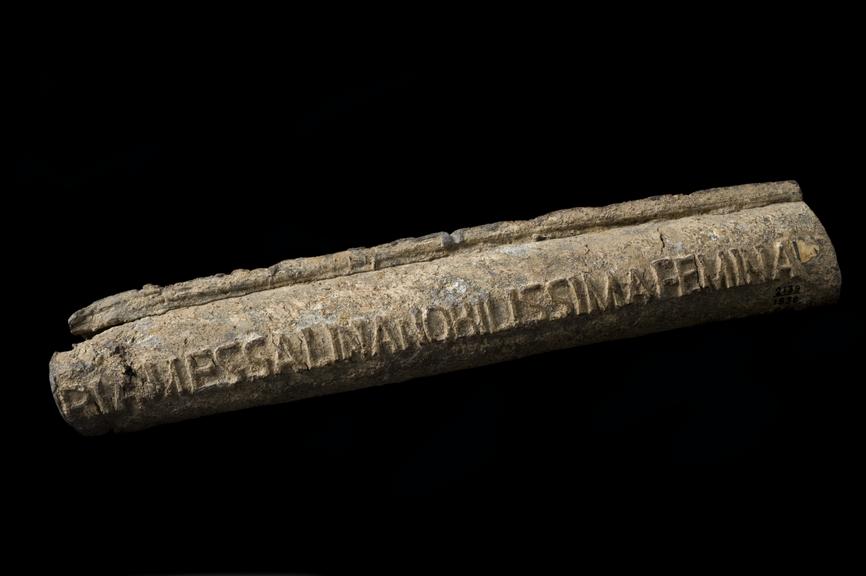

Lead water pipe, Roman, 20-47 CE
- Made:
- 20-47 CE in Roman Empire




Section of water pipe, lead, Roman, inscribed, possibly from the house of the empress Messalina, executed 47AD
The Roman civilisation is renowned for developing advanced systems that influenced the community’s health. These included the establishment of street cleaning, waste disposal and fresh water supplies in a large number of Roman towns and cities. Lead water pipes were used to supply the homes of the wealthy citizens of Rome with water – it is not uncommon to find the owner’s name cast into the pipe. Having a water supply plumbed directly into one’s home was a status symbol that few could afford. This inscription translates from Latin as “The most notable lady Valeria Messalina”. Valeria Messalina (c. 22-47/48 CE) was the third wife of the Roman Emperor Claudius. She was murdered by her husband after he found out about her extramarital affairs.
We now know that lead is not an ideal material for water pipes as it can dissolve in acidic water and poison the supply.
Details
- Category:
- Classical & Medieval Medicine
- Collection:
- Sir Henry Wellcome's Museum Collection
- Object Number:
- A635516
- Materials:
- lead
- Measurements:
-
overall: 37 mm x 350 mm x 67 mm, 3.39kg
- type:
- water pipe
- credit:
- Gorga, Evangelista




